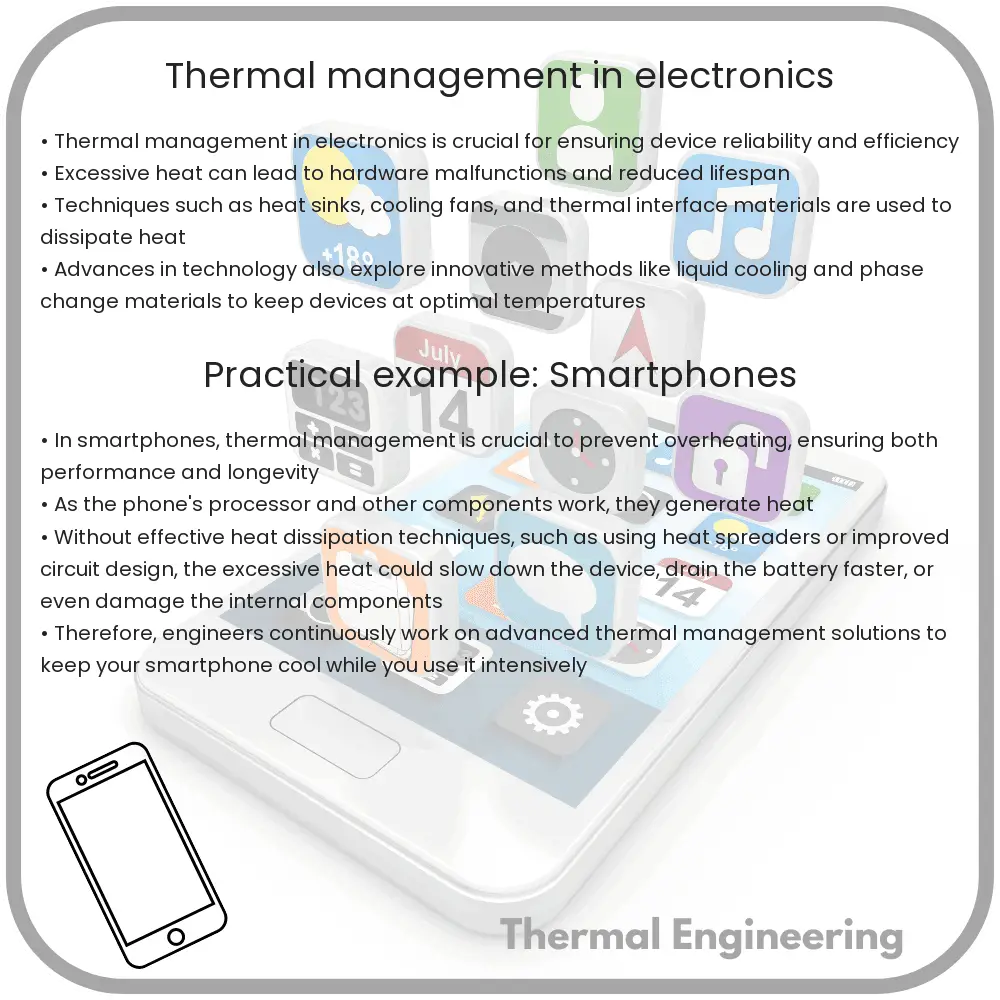Learn about thermal management in electronics, a critical engineering field that ensures devices operate efficiently without overheating.

Understanding Thermal Management in Electronics
Thermal management in electronics is a critical area of engineering that focuses on managing the heat produced by electronic components. The primary goal is to maintain optimal temperatures to prevent overheating, ensure efficient function, and extend the lifespan of electronic devices.
Why is Thermal Management Important?
Electronic devices generate heat as a byproduct of electrical energy. Excessive heat can lead to thermal stress, reduced reliability, and failures in electronic components. It can also affect the performance and stability of the device. Therefore, efficient thermal management systems are crucial for maintaining performance standards and preventing damage due to overheating.
Basic Principles of Heat Transfer
Heat transfer in electronics can be understood through three primary mechanisms:
- Conduction: Transfer of heat through materials. In electronics, this often occurs within the component or between the component and the heat sink.
- Convection: Transfer of heat through a fluid medium, such as air or a cooling liquid, which is often enhanced by fans or pumps.
- Radiation: Transfer of heat through electromagnetic waves, which generally plays a lesser role in small scale electronic devices but can be significant in larger systems or specific contexts.
Components of Thermal Management Systems
Effective thermal management in electronics utilizes several components and strategies:
- Heat Sinks: These are physical components made of materials with high thermal conductivity, such as aluminum or copper. They are designed to disperse heat from hotter areas (like a CPU) to cooler areas by increasing the surface area in contact with air.
- Thermal Compounds: Also known as thermal grease, these enhance the efficiency of heat transfer between the component and the heat sink.
- Cooling Fans: Often used in conjunction with heat sinks, fans promote air circulation to increase heat dissipation.
- Heat Pipes: Vacuum-sealed pipes containing a small amount of liquid, which vaporizes at the hot interface, absorbing heat, and condenses back to a liquid at the cold interface, releasing the absorbed heat.
- Liquid Cooling Systems: These systems use a coolant fluid that circulates through a pump, absorbing heat from the components and transferring it to a radiator, where it is dissipated into the environment.
Thermal Modeling and Computational Techniques
To design and optimize these thermal management systems, engineers use various computational techniques and modeling tools. Finite Element Analysis (FEA) and Computational Fluid Dynamics (CFD) are prominent methods used to simulate heat transfer and flow dynamics within electronic systems. These tools help predict thermal behavior and guide the design of more effective cooling systems.
Future Trends
As electronic devices continue to shrink in size while increasing in performance, managing heat effectively becomes more challenging and crucial. Innovations in material science, like the development of advanced thermal interface materials or improvement in the properties of graphene and other carbon nanostructures, are potential game changers. Moreover, the utilization of artificial intelligence in thermal management systems to dynamically adjust cooling based on real-time heat generation patterns is another area of ongoing research.
Thermal management in electronics is a vibrant field of engineering, continuously adapting to the evolving demands of technology. By understanding and improving how we manage heat in electronic devices, engineers play a crucial role in the advancement of modern technology.